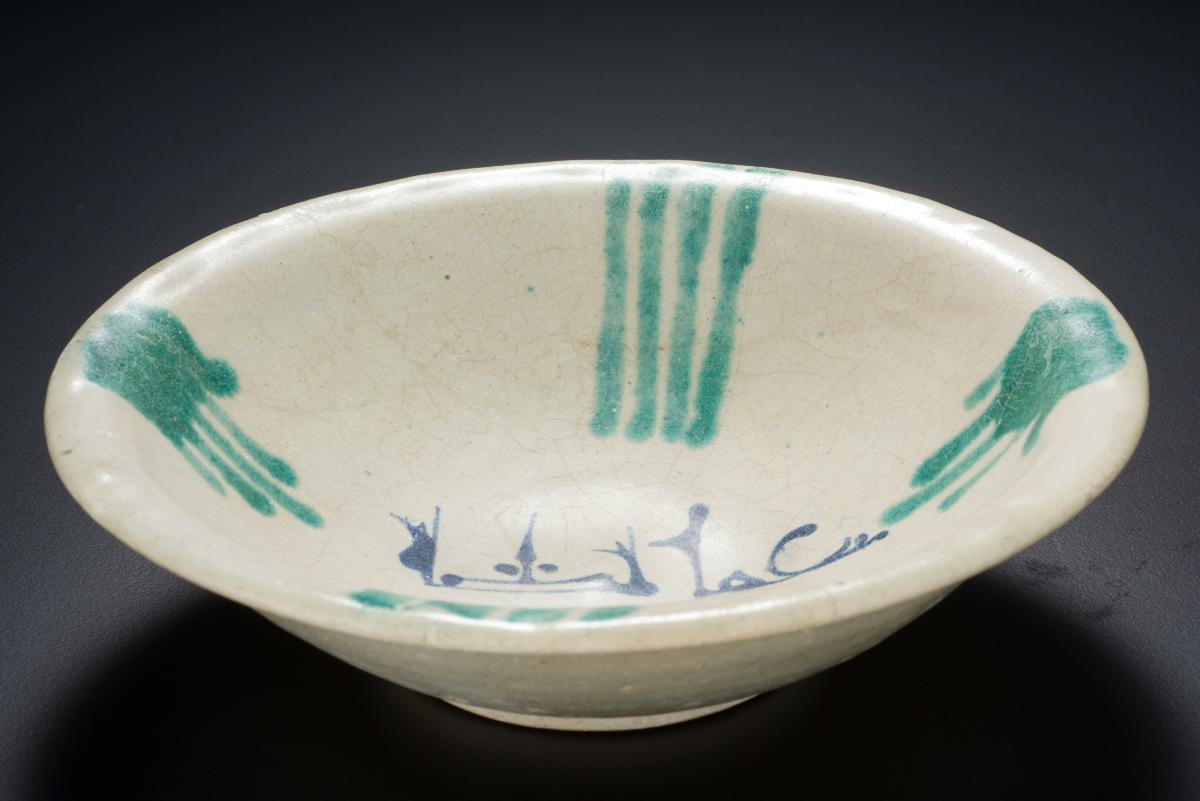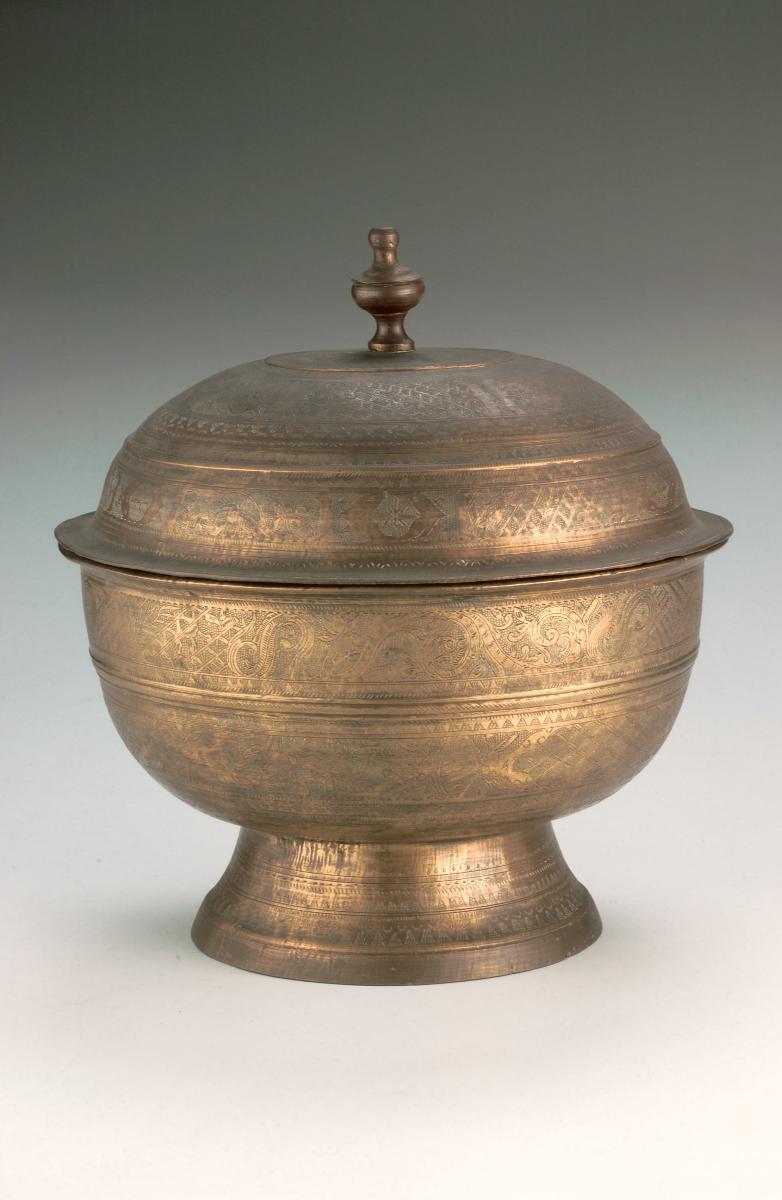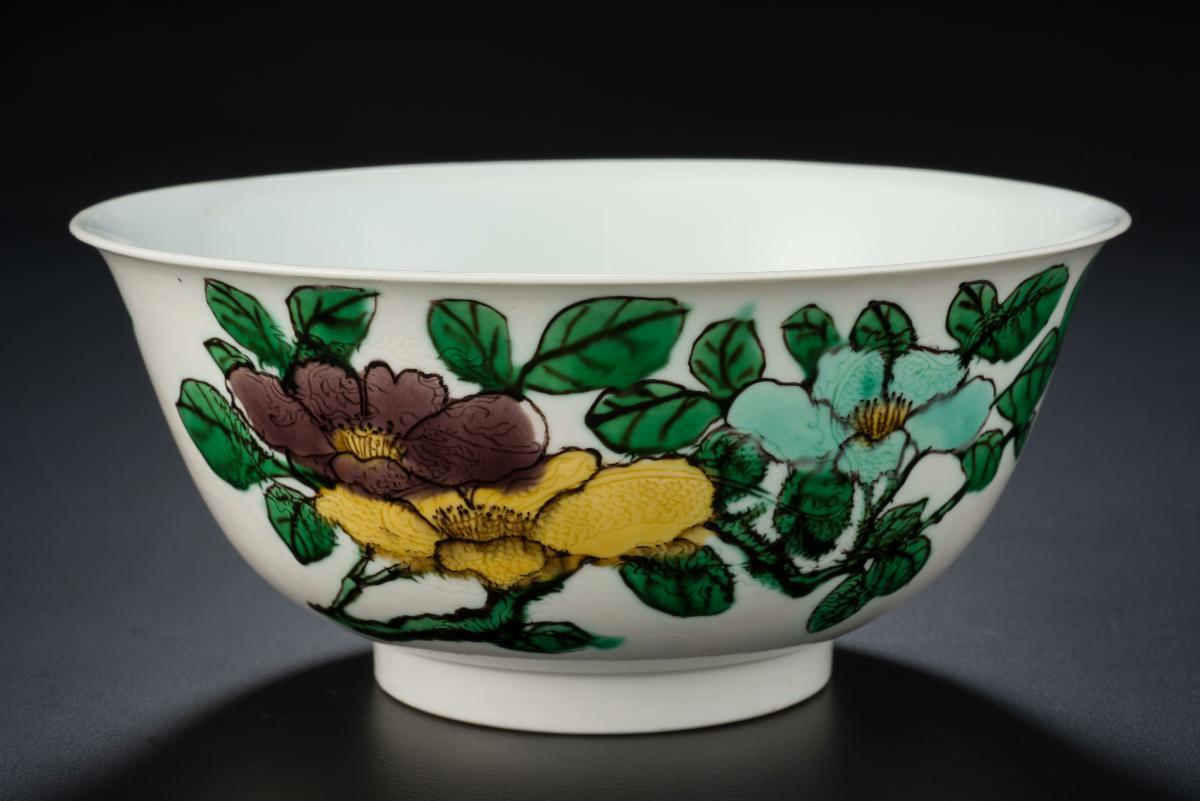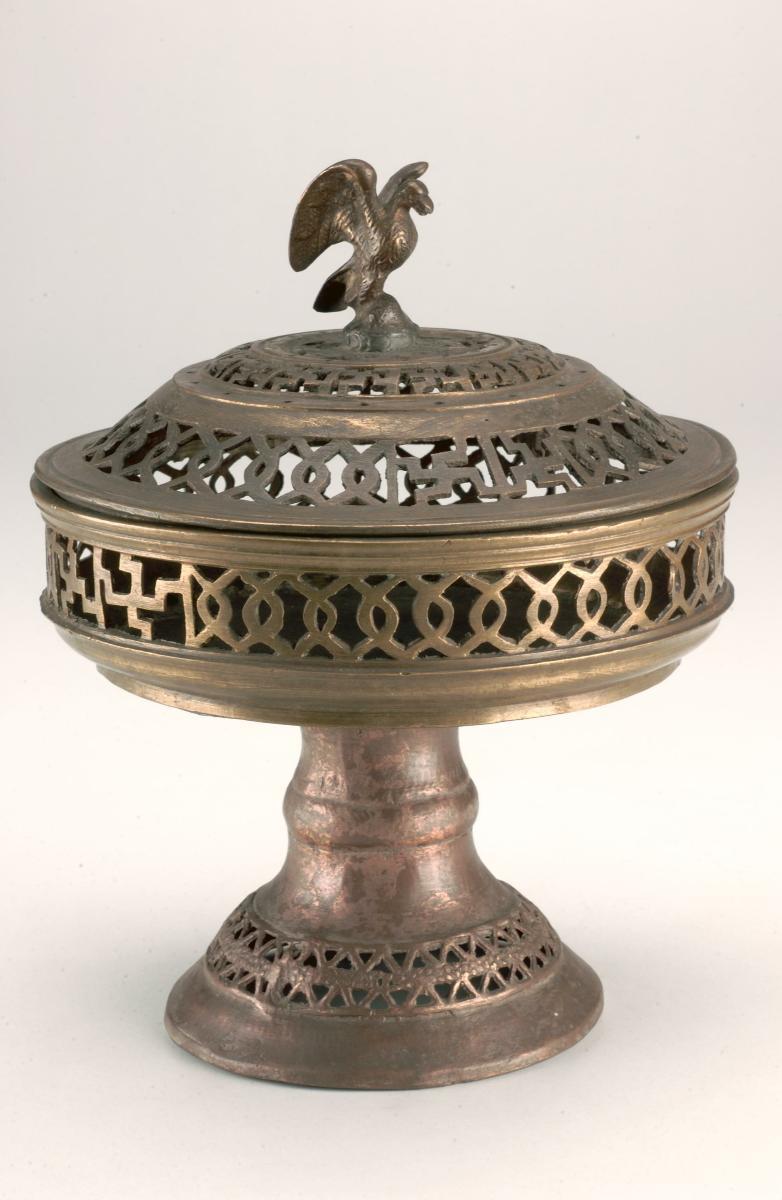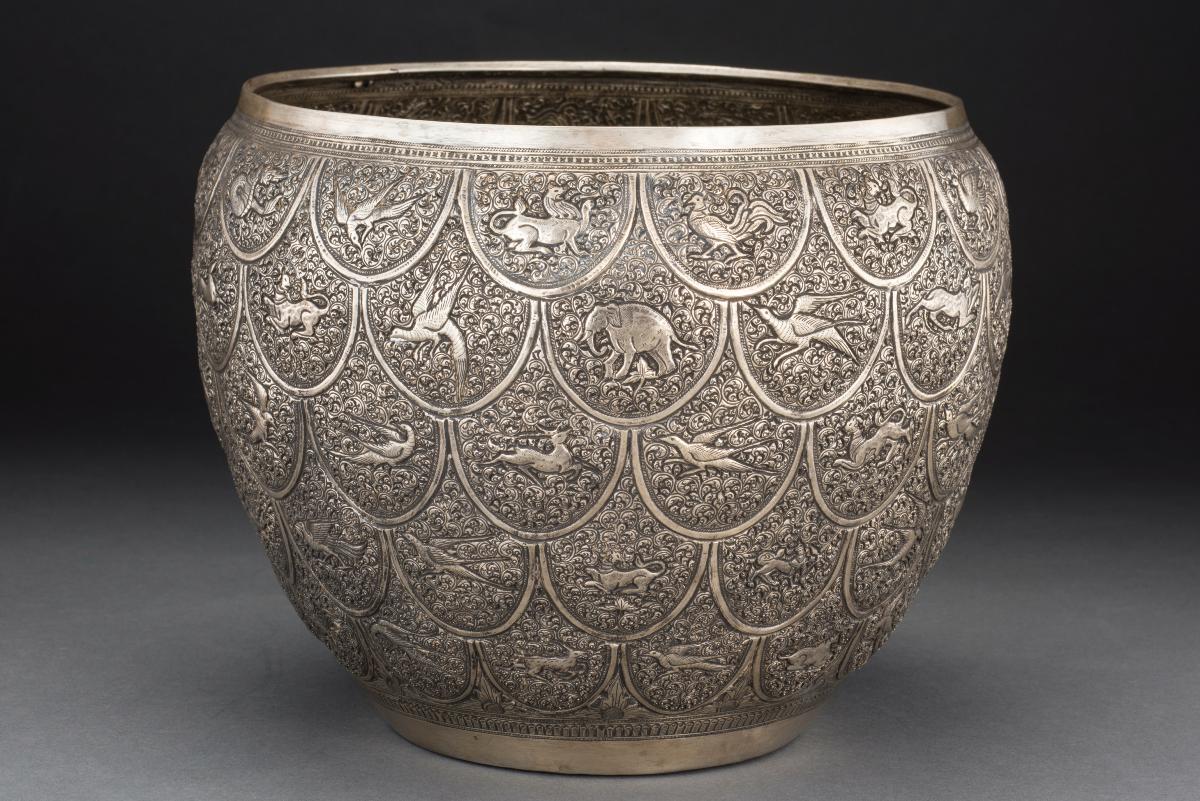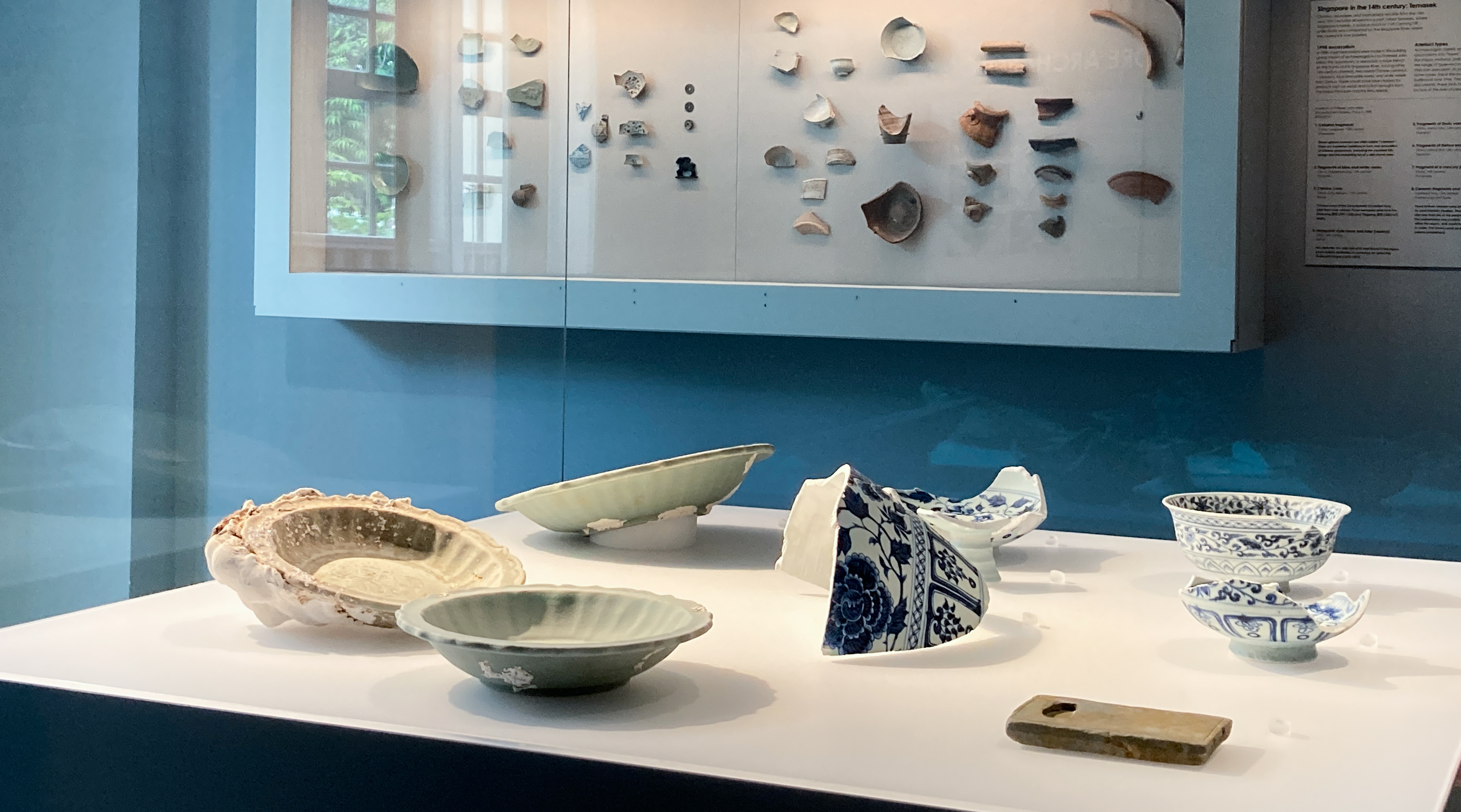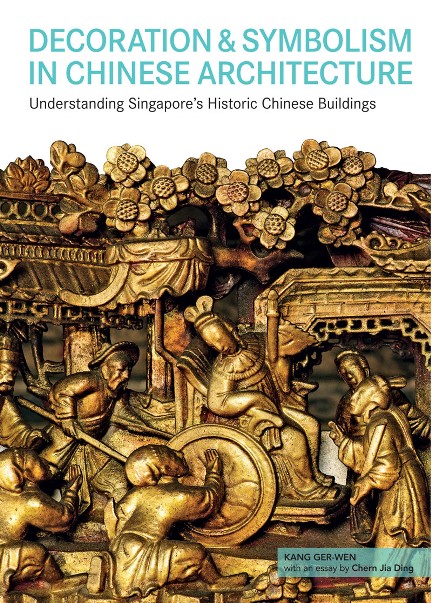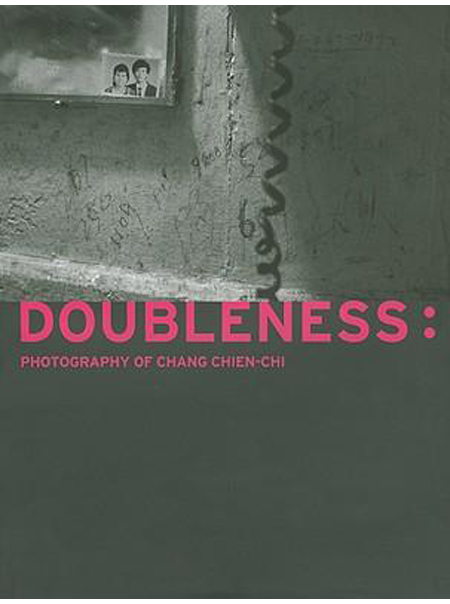The light grey interior is painted in cobalt-blue with a single phrase of flowing kufic script. Extending from the edges above and below are four green dashes. The green hand that is painted on either side of the signature is believed to be significant as a talisman to ward off the evil eye, and is thought to be of pre-Islamic origins. This bowl demonstrates the impact and influence that Chinese ceramics had on Islamic pottery. Abbasid potters of the 8th–9th centuries attempted to imitate imported Chinese porcelain, but the local clay was unsuitable to produce such delicate works. The Chinese ware on which the artisans based their pottery were minimally decorated. In order to achieve a translucent porcelain-like effect, Abbasid potters invented tin glaze, which gave a creamy white covering and translucent ivory colour by the addition of tin oxide. The use of tin oxide also reflects the eastern trade links of early Islamic Iraq, as tin was not a natural resource and had to be imported from Southeast Asia.




